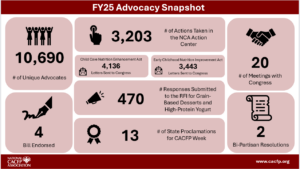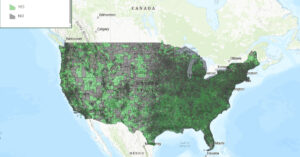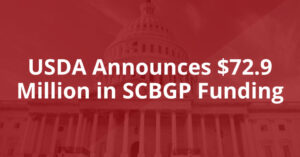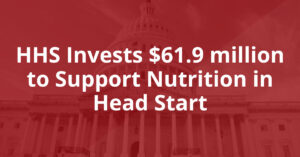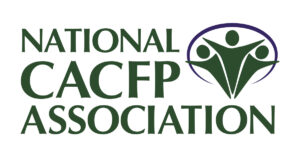Policy
Resources and Support During the Government Shutdown
The government shutdown has continued into November as Congress has yet to reach an agreement on Fiscal Year 2026 funding. We’ve put together a list of resources and ideas for providers to help families that experience disruption to food programs during the shutdown.
Read MoreMonitoring the Government Shutdown
We are closely monitoring the potential government shutdown on October 1 and its impact on the CACFP. As your trusted partner, we’ll keep you informed with timely updates.
Read MoreNCA FY25 Advocacy Round-Up
CACFP advocacy is central to the mission of National CACFP Association (NCA) and NCA is continuously working to support and advocate for you! This year, we’ve worked to help raise awareness, expand and improve the CACFP. Your NCA membership supports these efforts. THANK YOU!
Read MoreQuarterly Policy Update: October 2025
In the last few months, there have been many actions by USDA, HHS, and Congress impacting Child Nutrition Programs. Keep reading to see what you’ve missed and stay up to date with CACFP policy!
Read MoreFY26 Area Eligibility Map Updated
Back to Blog Back to Blog FY26 Area Eligibility Map Updated September 29, 2025 USDA announced that the CACFP and SFSP Area Eligibility Mapper has been updated for fiscal year 2026. Why It Matters Census data and school data are the two primary sources that may be used to determine whether a site is area…
Read MoreUSDA Announces $72.9 Million in Specialty Crop Block Grant Funding
USDA announced $72.9 million in grant funding to states through the Specialty Crop Block Grant Program. The purpose of the SCBGP is to enhance the competitiveness of specialty crops, including fruits, vegetables, tree nuts, dried fruits, horticulture and nursery crops (including floriculture).
Read MoreHHS Invests $61.9 million to Support Nutrition in Head Start
The U.S. Department of Health and Human Services (HHS) announced over $61 million in funding to over 290 Head Start programs to support nutrition services. Recipients will implement their nutrition initiatives over the next year, but this investment will have a long-term impact on Head Start families.
Read MoreWhite House Releases Make Our Children Healthy Again Strategy
On September 9, 2025, the White House released the Make Our Children Healthy Again Strategy Report which outlines actions of the executive branch to address the childhood chronic disease crisis.
Read MoreNCA Response – USDA Reorganization Plan
In July, USDA announced a Department Reorganization Plan which includes the consolidation of the FNS Regional Offices from seven to five hubs over the next two years. NCA has submitted comments to USDA on the reduction in force at the national office, as well as the relocation and reduction in the number of FNS regions.
Read More2025-2026 Cash In Lieu Value
The USDA has released the cash-in-lieu value of USDA foods for 2025-2026. The value has increased by half a cent.
Read More


